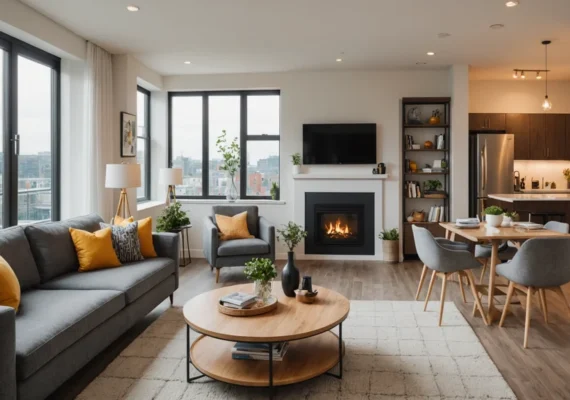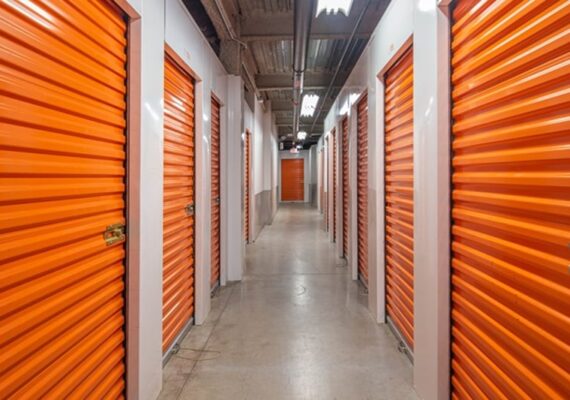Will you live on base… or off?
That’s one of the first questions military members and their families must answer when making a PCS move to a new duty station. And while the length of housing waiting lists shows that living on base continues to be a popular option for military families, many factors go into your decision as to whether you’ll live on base or not. Some military members aren’t given the choice as to whether they’ll live in military housing (for instance, in certain overseas locations or designated housing for commanders and senior enlisted leaders), but most service members will have the opportunity to weigh the options and choose where they live.
Housing Options for Military Members
Depending on whether you’re stationed stateside or OCONUS (overseas), you’ll probably have several options for housing.
Barracks/Dorms/Bachelor quarters
Single or unaccompanied military installation housing is rent-free. However, you may have a roommate or share bathrooms.
Privatized Military Housing
Privatized military housing is owned and maintained by a private-sector company. Your BAH will go to the housing company for rent and part or all of your utilities, which varies by location. 99% of all military housing is now privatized.
Government Owned Housing
Though rare, there is still housing owned and maintained by the DoD, and you won’t pay rent or utilities. Connect with your installation’s housing office for more information if this is the case where you’re stationed.
Renting or Buying a Home Off Base
Living off base offers you more choices in housing, but you’ll need to contact the housing office before you sign a lease on a rental. It’s also important to become familiar with the Service members Civil Relief Act (SCRA) and military clause so that you know your rights and the proper process if you need to break a lease for deployment or a PCS move.
Buying a home can be a great investment opportunity for military members, and you’ll have the ability to choose your location and amenities, and customize your home however you prefer. If you decide to purchase a home, you’ll need financial resources for maintenance and homeownership expenses, as well as be prepared to sell or rent your home quickly when you get orders.
Overseas Military Housing
If you’re stationed overseas, your housing options will be similar to the above, but there are some important differences to living stateside, including financial. At a CONUS location, if you choose to live off base, you will pocket the difference (if any) between your BAH and rent or house payment. At an OCONUS assignment, you will not receive BAH if you live off the installation but instead be issued an Overseas Housing Allowance (OHA), which is based on your exact costs (up to a predetermined maximum). Keep this in mind when house hunting!
Living on Base
Some military members and families love living on base, citing the camaraderie, safety, and easy commute to work as great perks. Others dislike it for various reasons, including few housing options, wanting more distance between work and home life, and a perceived lack of privacy. Let’s take a look at some of the pros and cons of living on base.
Pros of Living on Base
Easy Commute
You’ll be close to your workplace, meaning your commute will likely be very short.
Convenience of Schools
If you have school-aged children, you’ll often find schools on base, from preschool to high school, sometimes walkable from housing. Kids will be with other military children, which can help provide a sense of community and continuity.
Base Amenities
One of the best perks of living on base is the accessibility of base amenities, such as the fitness center, walking and running trails, pool, recreational activities like the bowling center or hobby shops, the commissary and exchange, and even childcare, playgrounds, dog parks, and splash pads.
Community
Living in military housing often feels like you’re living in a small town, and the shared military experience can immediately make for a sense of belonging. For instance, during a deployment, military neighbors will understand what you’re going through and will likely check on the family left behind. Most bases sponsor regular family-friendly events, and there are typically plenty of parks and sports complexes. Your neighbors may very well become your closest friends, and you could find yourself stationed together again at a future assignment!
Saving Money
If you live in military housing, you’ll still pay rent (your BAH), but it can often be cheaper than renting a home off base, especially in large metro areas or expensive locations. Utilities and other expenses may be partially or completely included in your rent, depending on location. You’ll be closer to your home, which means you can pop home for lunch more often than going out if you choose, not to mention the fuel savings on a longer commute.
Cons of Living on Base
Limited Housing Choices
The quality of military housing varies widely, with some locations featuring brand-new or updated homes, while other military housing is outdated and in sad need of renovations or repairs. You may be assigned an apartment or townhome connected to neighbors on both sides or a single-family home with an ample yard and garage, depending on your location. Homes are assigned by rank and family size, with few choices. What you’re offered is what you get. (You may have the option to turn down one home, but usually if you turn down two, you’ll be back at the bottom of the waiting list or removed.)
Housing Waiting Lists
Housing waiting lists can be long, with waits of 6 months to a year, or even longer. You may not have the time to wait for a house on base or may be moving on already before you finally make it to the top of the waiting list. (Note that if you’re hoping to live on base, you can usually get on the waiting list before you arrive. Many housing companies allow you to fill out the housing application as soon as you receive orders. Check in with the housing office at your new base for their specific stipulations, as it can vary.)
Past Issues with Military Housing
In the 1990s, most military housing was placed under the management of private companies, becoming what is known as privatized housing. This was a solution to the military’s rising costs for maintaining and replacing government housing and was seen as a fix to upgrade deteriorating homes and promised a better quality of life for families living on base. However, in recent years, you’ve probably heard about the problems with some military housing: failed building and health inspections, issues with mold, lack of response to complaints from housing residents, structural concerns, and other problems, all while companies continued to charge the full BAH of military members residing in these homes. Reuters released their Ambushed at Home series, bringing attention to the situation, and advocacy and non-profit groups like the Military Family Advisory Network became involved, including testifying before the Senate Armed Services Committee. In light of these concerns, there’s now a Military Housing Privatization Initiative Tenant Bill of Rights that you should familiarize yourself with if you’re planning to live in military housing (see endnotes).
Pet Restrictions
All military installations have regulations about how many and what types of pets are allowed in housing, which may affect your decision on where to live. Banned pets in military housing typically include “exotic” pets, including but not limited to hedgehogs, ferrets, arachnids, monkeys, farm animals (such as chickens or goats), and certain types of snakes. All installations also have dog breed restrictions and do not allow certain dog breeds in housing, which may include Pit Bull Terriers, Doberman Pinschers, Rottweilers, and others. Check in with your housing office for more specifics. Learn more: Dog Breed Restrictions for On-Base Military Housing.
Privacy
The perceived “fishbowl” of on-base living can be a deterrent to those who want more work/life separation or who don’t relish the idea of living down the street from their supervisor.
So, how will you determine whether living in military housing is the right option for you or if you’d rather live off base? Adding your own pros and cons to the above lists can help you make the decision that’s best for your specific situation. Military moves are challenging, and finding housing is at the top of our PCS to-do lists. Just remember, whichever option you choose, there’s always room to change your mind and try something different next time!
About the author: Jen McDonald is the author of You Are Not Alone: Encouragement for the Heart of a Military Spouse and the host of the Milspouse Matters podcast and the Christian Milspouse Podcast. An experienced writer and editor, she’s been published in numerous books and national publications and featured on major online sites. As a military spouse for 30 years and the mom of four, including one son serving in the military, Jen is passionate about strengthening and encouraging military families in the unique challenges they face. Connect with Jen and get resources for your military life at her site, Jen McDonald, and find her on Facebook, Pinterest, Twitter, and Instagram as @jenmcdonald88 and @milspousematters.
Sources
- MFAN: Privatized Military Housing Report
- Privatized Military Housing: Update on DOD’s Efforts to Address Oversight Challenges
- Military Housing Privatization Initiative Tenant Bill of Rights
- Understanding Privatized Military Housing
For more tips on moving and housing, visit our blog at https://militarycrashpad.com/blog/.







